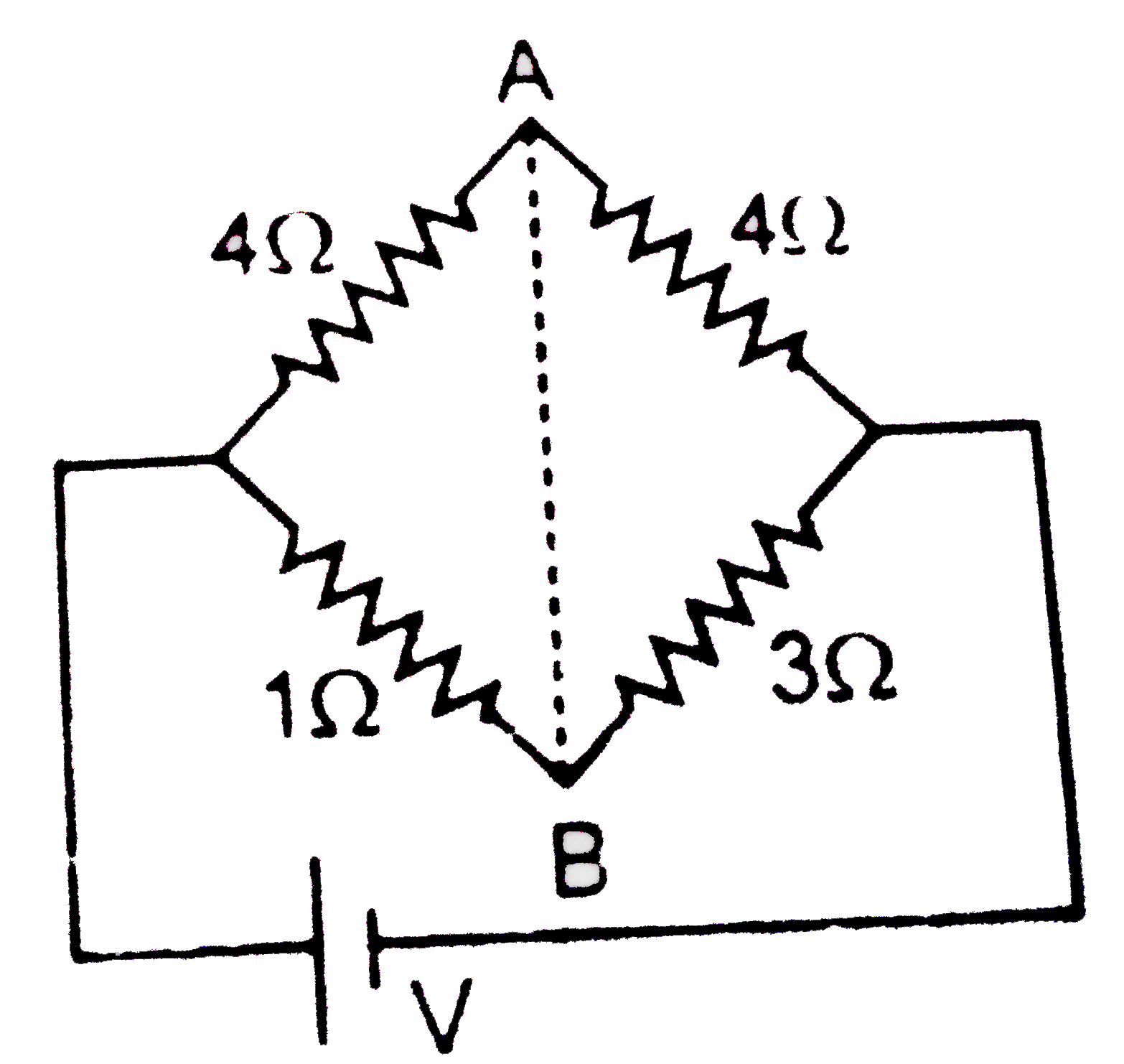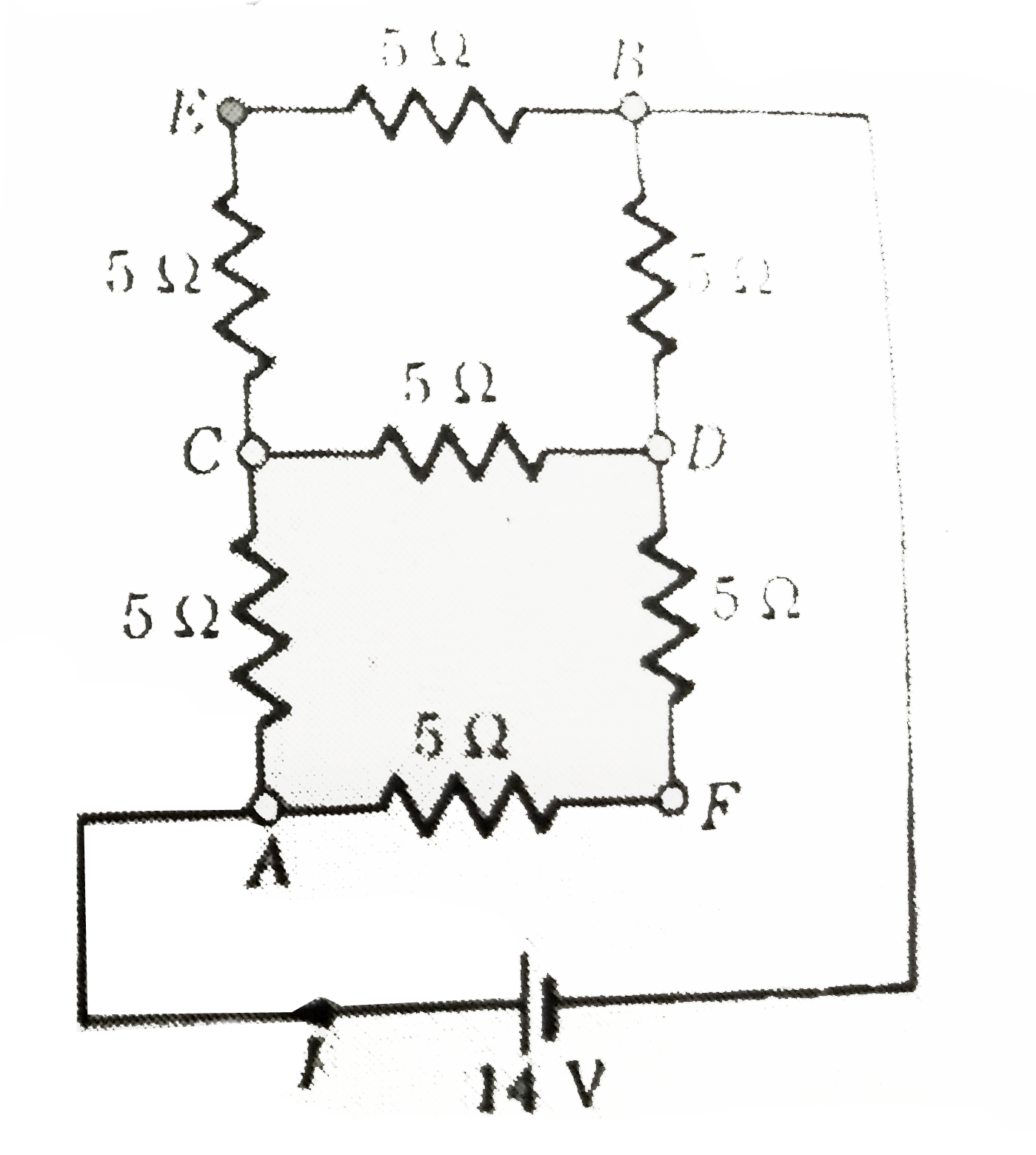For the circuit shown, a shorting wire of negligible resistance is added to the circuit between points A and B. When this shorting wire is added, bulb 3 goes out. Which bulb (s) in the circuit brighten ? All bulbs are identical.

A
only bulbs 2
B
only bulbs 4
C
only bulbs 1 and 4
D
only bulbs 2 and 4
Video Solution
Text Solution
The correct Answer is:C
(c ) Initially: Req=5R/3 Finally : Req=3R/2
Equivalent resistance decreases, so current increases in circuit and in '1' also. Hence brightness of '1' increases. It means p.d. across '1' increases, so across '2' p.d. decreases, hence bightness of 2 decreases.
Initially : p.d. across '4'
V4i=12[(2R/3)ε2R/3+R]=ε5
Finally : V4f=(R/2)εR/2+R=ε3
V4f>V4i, hence brightness of 4 increases.
|
Topper's Solved these Questions
- CURRENT ELECTRICITYBOOK - A2ZCHAPTER - CURRENT ELECTRICITYEXERCISE - R-C Circuits
17 Videos
- CURRENT ELECTRICITYBOOK - A2ZCHAPTER - CURRENT ELECTRICITYEXERCISE - Ammeter And Voltmeter
41 Videos
- CURRENT ELECTRICITYBOOK - A2ZCHAPTER - CURRENT ELECTRICITYEXERCISE - Combination And Resistivity
38 Videos
- ATOMIC PHYSICSBOOK - A2ZCHAPTER - ATOMIC PHYSICSEXERCISE - Section D - Chapter End Test
30 Videos
- DUAL NATURE OF RADIATION AND MATTERBOOK - A2ZCHAPTER - DUAL NATURE OF RADIATION AND MATTEREXERCISE - Section D - Chapter End Test
30 Videos
Similar Questions
Knowledge Check
In the circuit shown if a conducting wire is connected between points A and B, the current in this wire will :-
 Aflow from A to BBflow in the direction which will be decided by the value of VCbe zeroDflow from B to A
Aflow from A to BBflow in the direction which will be decided by the value of VCbe zeroDflow from B to AIn the circuit of a condacting wire is connected between point A and B the current is this wire will
 Aflow from B to ABflow from A to BCflow in the direction which will be decided by the value of VDflow be zero
Aflow from B to ABflow from A to BCflow in the direction which will be decided by the value of VDflow be zeroIn the circuit diagram, all the bulbs are identical. Which bulb will be the brightest ?
 AABBCCDD
AABBCCDD

In the circuit shown in figure. Determine the current in the resistance CD and equivalent resistance between the points A and B. the iternal resistance of the cell is negligible.
View Solution



In which of the circuits given below above does the bulbs glow brighter ? (Assume that all bulbs and cells are identical )
View Solution

In which of the circuits given above does the bulbs glow brighter? (Assume that all bulbs and cells are identical)
View SolutionIn the circuit shown if a conducting wire is connected between points A and B, the current in this wire will :-

View SolutionIn the circuit shown in the figure, if both the bulbs B1andB2 are identical

View Solution


